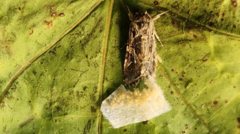The recent innovative research from Tel Aviv University suggests a groundbreaking understanding of how plants and animals interact through sound. This study demonstrates that animals can respond to the distress calls of plants, indicating the presence of a complex ecosystem that remains largely unexplored.
For the first time, it has been shown that female moths actively avoid laying their eggs on tomato plants that emit distress sounds. This correlation highlights a potential behavior where animals may discern the health status of plants based on the sounds they produce. Two years prior, the same research team determined that plants generate these “screams” when under stress, producing sounds that lie beyond the human auditory range yet are detectable by various insects, bats, and some mammals.
Professor Yossi Yovel, a key figure in the study, emphasizes this unprecedented discovery: “This is the first demonstration ever of an animal responding to sounds produced by a plant.” The researchers carried out a series of meticulously controlled experiments to confirm that the moths' avoidance was indeed a reaction to sound rather than the visual appearance of the plants.
Looking ahead, the researchers plan to further explore the specific sounds made by different plant species and whether other animal behaviors, such as pollination or foraging, are influenced by these plant sounds. Professor Lilach Hadany points to the exciting potential for research into whether plants can use sound to communicate with one another, perhaps signaling stress responses that lead to collective behavior, like conserving water during droughts.
While the notion of plant sentience is dismissed—emphasizing that these sounds arise from physical alterations in the plants’ conditions—this study exposes a fascinating approach to understanding how both plants and animals may adapt to the sounds in their mutual environments. “If that is the case, then plants and animals have co-evolved the ability to produce and listen to the sounds for their mutual benefit,” Professor Hadany noted.
Focusing specifically on the relationship between tomato plants and their frequent invaders, the researchers found that moths, preferring to lay their eggs on healthier plants, were deterred by the warnings indicated through sound. The implications of this research, which has been documented in the journal *eLife*, pave the way for understanding an entirely new realm of communication within nature. As researchers delve deeper into this “new language” of plants and animals, an entire world awaits discovery, filled with potential insights on how living organisms coexist and communicate in ways that have yet to be fully realized.
For the first time, it has been shown that female moths actively avoid laying their eggs on tomato plants that emit distress sounds. This correlation highlights a potential behavior where animals may discern the health status of plants based on the sounds they produce. Two years prior, the same research team determined that plants generate these “screams” when under stress, producing sounds that lie beyond the human auditory range yet are detectable by various insects, bats, and some mammals.
Professor Yossi Yovel, a key figure in the study, emphasizes this unprecedented discovery: “This is the first demonstration ever of an animal responding to sounds produced by a plant.” The researchers carried out a series of meticulously controlled experiments to confirm that the moths' avoidance was indeed a reaction to sound rather than the visual appearance of the plants.
Looking ahead, the researchers plan to further explore the specific sounds made by different plant species and whether other animal behaviors, such as pollination or foraging, are influenced by these plant sounds. Professor Lilach Hadany points to the exciting potential for research into whether plants can use sound to communicate with one another, perhaps signaling stress responses that lead to collective behavior, like conserving water during droughts.
While the notion of plant sentience is dismissed—emphasizing that these sounds arise from physical alterations in the plants’ conditions—this study exposes a fascinating approach to understanding how both plants and animals may adapt to the sounds in their mutual environments. “If that is the case, then plants and animals have co-evolved the ability to produce and listen to the sounds for their mutual benefit,” Professor Hadany noted.
Focusing specifically on the relationship between tomato plants and their frequent invaders, the researchers found that moths, preferring to lay their eggs on healthier plants, were deterred by the warnings indicated through sound. The implications of this research, which has been documented in the journal *eLife*, pave the way for understanding an entirely new realm of communication within nature. As researchers delve deeper into this “new language” of plants and animals, an entire world awaits discovery, filled with potential insights on how living organisms coexist and communicate in ways that have yet to be fully realized.






















